YouTuber Elliot Choy lives in a gigantic apartment — emphasis on gigantic. The ceilings stretch high, and the rooms are cavernous enough to skateboard across, play dodgeball in, or build a skate ramp. It’s the kind of space he was looking for when he and his friends created Ur Mom’s House, the 5-month-old YouTube content house based in Manhattan, New York City.
“I was thinking about living in Los Angeles, and I was like, Ugh, that sounds like every other creator in the world,” Kelly Wakasa, his roommate and fellow YouTuber, said one Saturday morning when BuzzFeed News visited Ur Mom’s House.
Moving to New York City has never really been the natural progression of a YouTuber’s career; creators have historically flocked to Los Angeles, partly because of the opportunity to expand beyond the platform. But Choy, along with Wakasa and their other roommates, Ashley Alexander and Annemarie Allen, “are not like the other girls,” so to speak. The former college YouTubers see New York City as a more textured, more visually arresting filming location than Los Angeles, and they hope to capture, in their videos, something outside the California content house mill.
“YouTube is super oversaturated in LA,” Alexander said.
Choy, Wakasa, Alexander, and Allen came up in a rising category of lifestyle vlogging that focused on the booming interest in university students’ lives — the genre of college YouTube. From college acceptance reactions to Ivy League application tips, college YouTubers have gone viral for their self-help frames, aided by SEO-optimized titles. Choy’s stunty videos, like “Giving Harvard Students an iPhone 11 if They Can Answer THIS Question,” have been viewed over 24 million times, and Alexander’s 1.2 million subscribers have faithfully watched her weekly vlogs about her life in school, such as “Forcing a GLOW UP the Day Before College (FAST Transformation).”
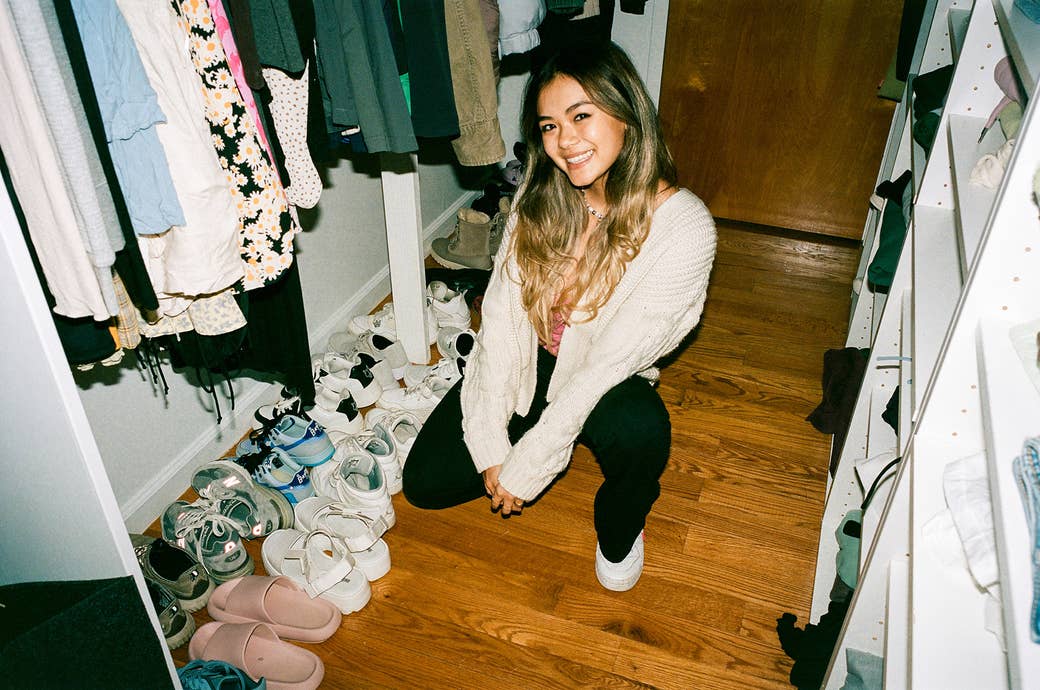
But after years of making content about being a student, many college YouTubers are facing a new dilemma. College has an expiration date, which limits the content. So what happens after they graduate?
“The only reason I have a YouTube channel is because I went to college,” Choy, 23, said. “But it wasn’t really a thing a few years ago.”
It wasn’t a thing a few years ago. Allen — who goes by AnnemarieChase online — said when she began her YouTube career, the mentality around pursuing a degree or having a social media career was a zero-sum game. “I remember talking to a management company, and they told me, ‘If you want to be a YouTuber, you cannot go to college,’” she said.
But since then, college-related content has exploded in popularity. Allen said that calling her videos “college vlogs” helped bump the channel’s overall viewership. Wakasa, 22, even admitted to enrolling in college just for his YouTube career. “I literally only went to make content,” he said. “I didn’t go to any classes, but I filmed and maximized content.” His campus stunts, like taking random classmates skydiving and gifting one with a Tesla, helped grow his subscriber base (he currently has more than 940,000 subscribers). His final trick was dropping out. He made four videos about it, racking up a collective 2 million views on YouTube.
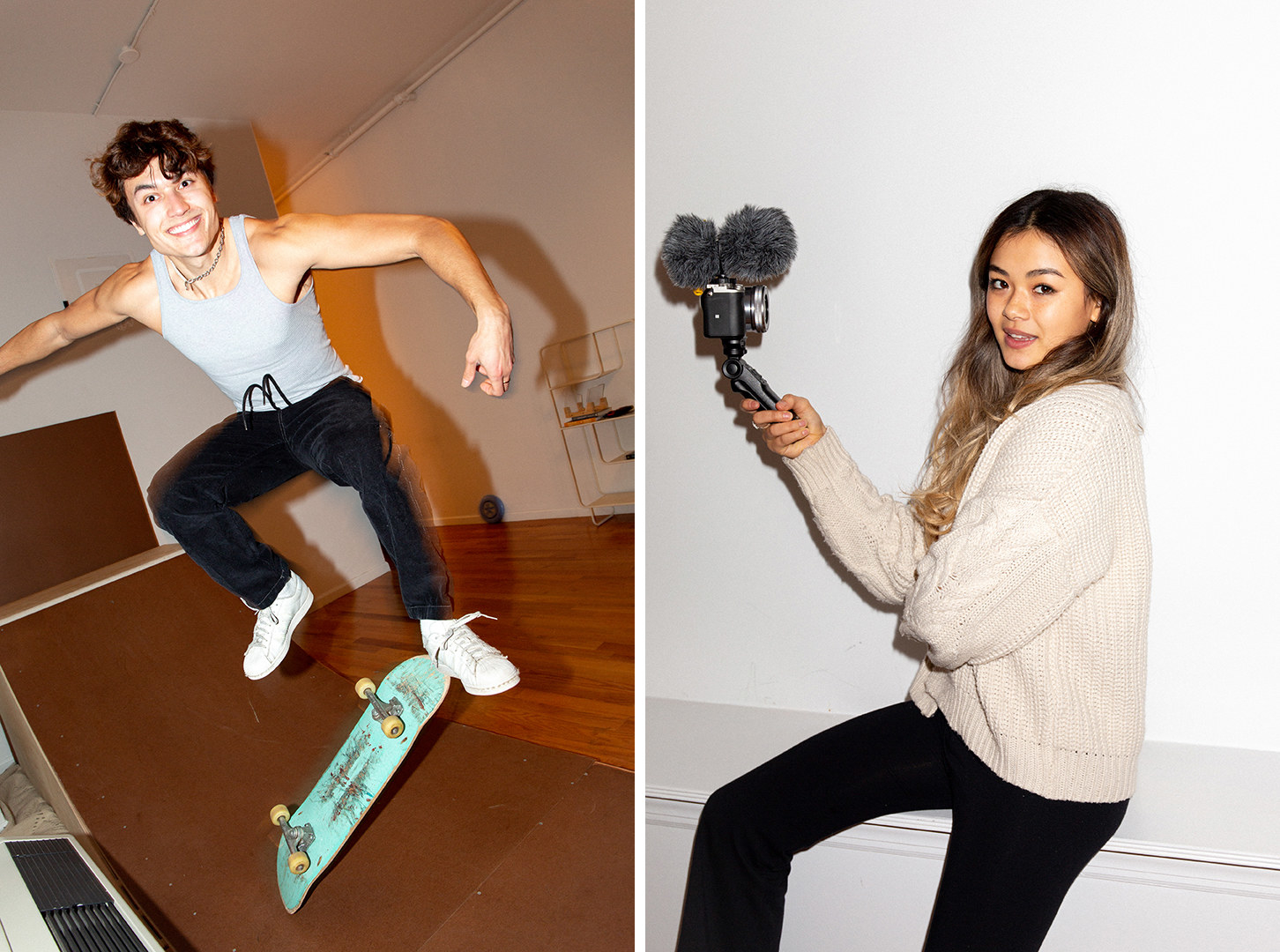
“It was just fun because other people are there for school,” he said, “but I got to take them skydiving, or kidnap them and take them to Mexico, or throw a desk out a window — wait, cut that last one.” (Here is the video where Wakasa throws a desk out a window.)
Then graduation came and went, and it was time to find a new setting for their YouTube channels. Enter Ur Mom’s House. Deftly named after Alexander’s internet alias, “ur mom ashley,” the team met via various YouTube-based trips in 2021. They became fast friends and decided to move in together.
“Being a creator, you’re generally really alone, so being in a content house is really helpful,” Choy said. “You go through the same stuff, the same issues, so business-wise and creatively, it was really nice.”
“It’s an isolating job,” Alexander added. “It’s nice to have friends that understand.”
Content houses give creators a chance to make videos with each other and grow their platforms together, though the members of Ur Mom’s House maintain that their collaborations are different from those of other content houses. “Most creator houses pick people that have followings or beneficial collaborations,” Choy said, “but we’re trying to build something like a family.”
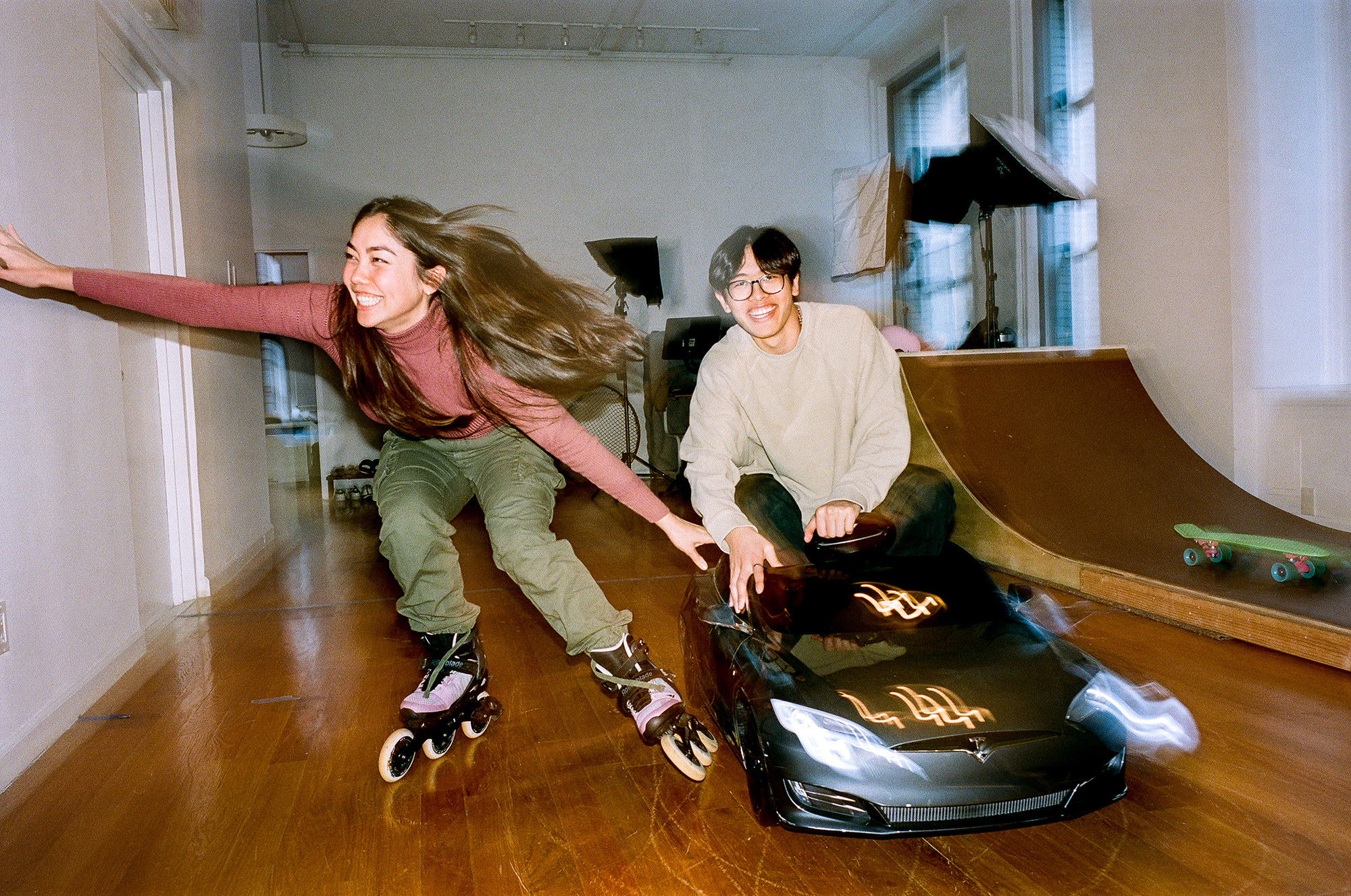
From the viewer’s perspective, a content house is like watching an ensemble cast on your favorite sitcom, except you get to see the plot play out from multiple points of view. You might follow Alexander for her weekly food diaries and then see Allen in one of her videos and start watching Allen’s vlogs. Alexander’s budding love story with Wakasa is teased all over her channel, so you can sleuth through his videos for more clues. Then, of course, it only feels right to watch Choy’s videos to get more details on the group’s daily lives.
“I didn’t make any money in 2020. I spent it all on videos,” Wakasa said. “I’ll die for the content.”
Currently, the four of them are the only full-time members of Ur Mom’s House. But Choy said they want to add more members to the crew, and they hope their space can be a hub for other creators to meet and hang out.
A content house is advantageous, as more characters together can help your content pop. But the members of Ur Mom’s House are determined to stand out in more ways than one. On average, Wakasa said, he spends at least $1,000 on each video to pay for camera operators, editors, and other purchases for eye-catching storylines, like renting a Lamborghini or covering himself in thousands of bees. The most he’s shelled out to make a YouTube video, he said, was $6,000.
“I didn’t make any money in 2020,” he said. “I spent it all on videos.” It didn’t matter, he added, because his only concern was making cool content. “I’ll die for the content. Rain or shine, if it takes 10 hours, I’ll do it.”
Allen, who at 26 is the oldest in the group, struggled to define herself as an influencer initially because her path as a creator is different from that of her roommates. Since she graduated from college in 2018, her content has revolved around her life as an “unemployed millennial.” Now her top videos are the ones where her roommates are featured too. She currently has 200,000 subscribers and is still establishing her follower base. To boost her income, Allen said, she does freelance work in the city, including teaching yoga and assisting other creators with filming.
“I only started making money in October from YouTube,” she said. “The roommates helped me out a lot with the cost of living here. I guess it was worth it.”
Wakasa cheered her on: “Own that, Annemarie!”
Alexander chimed in: “You’re a full-time creator.”
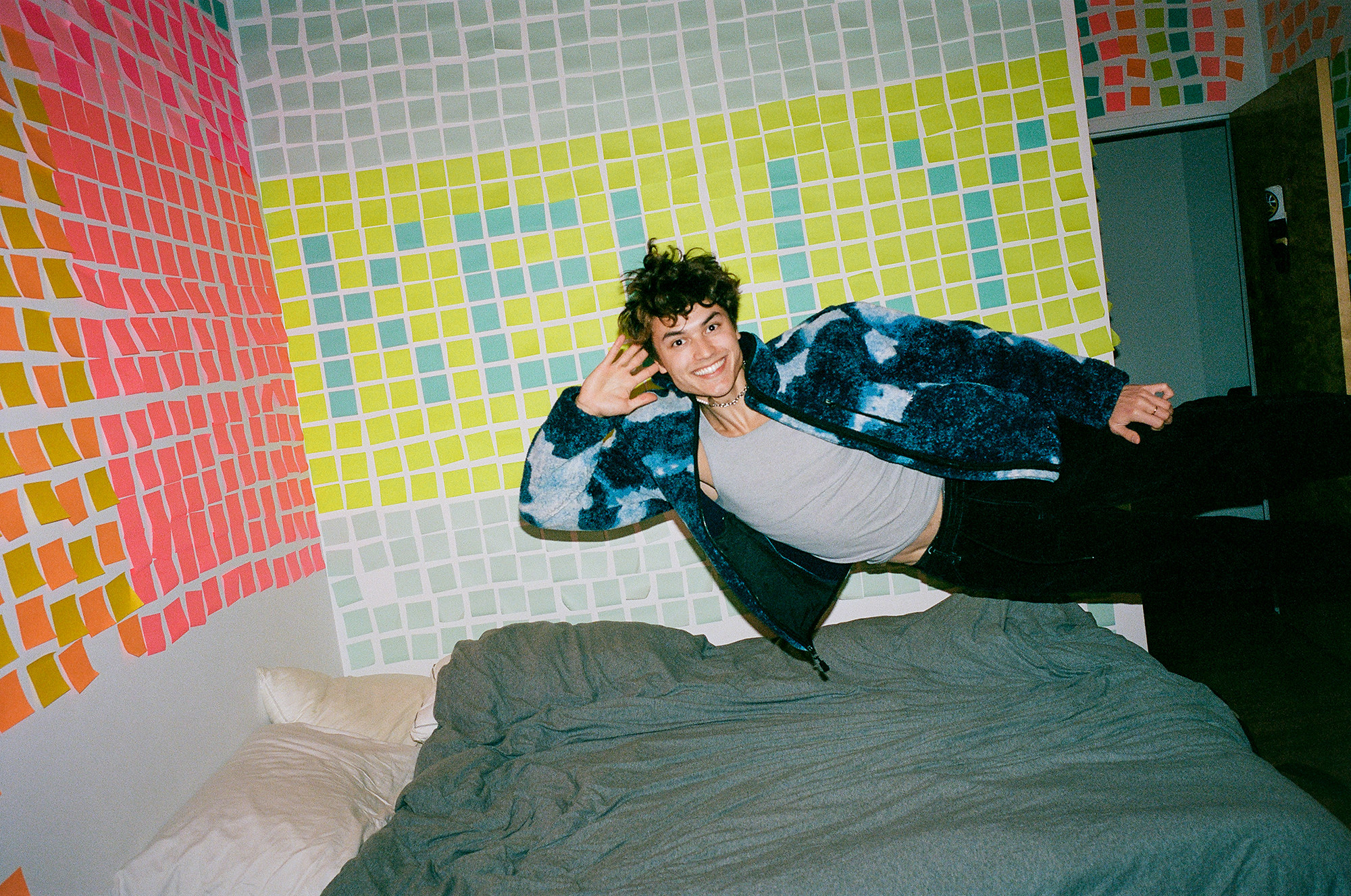
Though their video titles — particularly around Alexander and Wakasa’s romance — read along the lines of Wattpad fanfiction (“I Went in for the Kiss…,” “So… There’s This Boy”), Wakasa balked at the idea that their videos could be posited as fictionalized stories. “This is our real life,” he said. “We’re filming what’s happening; we don’t necessarily have a story in mind.” The authenticity behind their friendship, they believe, is part of what also makes their house stand out.
It’s all part of figuring out their online identity after college, especially as they navigate the ever-shifting landscape of lifestyle vlogging. Their New York City content is a big change from the videos they made in college, but the evolution of the creator economy means that YouTubers now increasingly see their channels as a career in itself rather than as a mere step toward a career in the entertainment industry.
Choy said he believes creators now have the same opportunities as traditional celebrities, whereas YouTubers before them did not.
“Generationally, I didn’t see a lot of [creators] who stayed on the platform when I was first starting out,” Allen said.
“The OGs of YouTube, like Ryan Higa or KevJumba, I don’t think they were like, I want to be an influencer,” Choy said. “It wasn’t as established; traditional media still had so much more pull. But nowadays, people want to become TikTokers or YouTubers, so they go onto the platforms with the intention of staying there. Now there’s a standard of success that you can see because people before have shown what is possible.”
Alexander agreed. “I don’t think I thought of it in terms of a job until I was older, but I remember always thinking it would be the coolest thing to be,” she said.
For now, the members of Ur Mom’s House are just feeling it out — in a new location, a new backdrop to film against, a new city to take in. Like many of their predecessors — the notorious TikTok Hype House, Sway House, the ever-scandalous, now-defunct Vlog Squad — it’s hard to distinguish what makes them different from another group of rowdy young creators moving in together and competing as a group for your attention.
They remained evasive about whether they’ll re-sign their lease (which we will surely find out in a video), and they said they don’t have much of a strategy beyond posting videos together and eventually focusing on a joint channel presence. If your 20s are for learning about yourself, then their viewers will just go along for the ride. But that doesn’t mean they underestimate the work it will take to keep your attention. Alexander said that, in the last three years, the longest hiatus she’s taken from creating content was about four weeks.
“You can’t take a break,” she said. ●
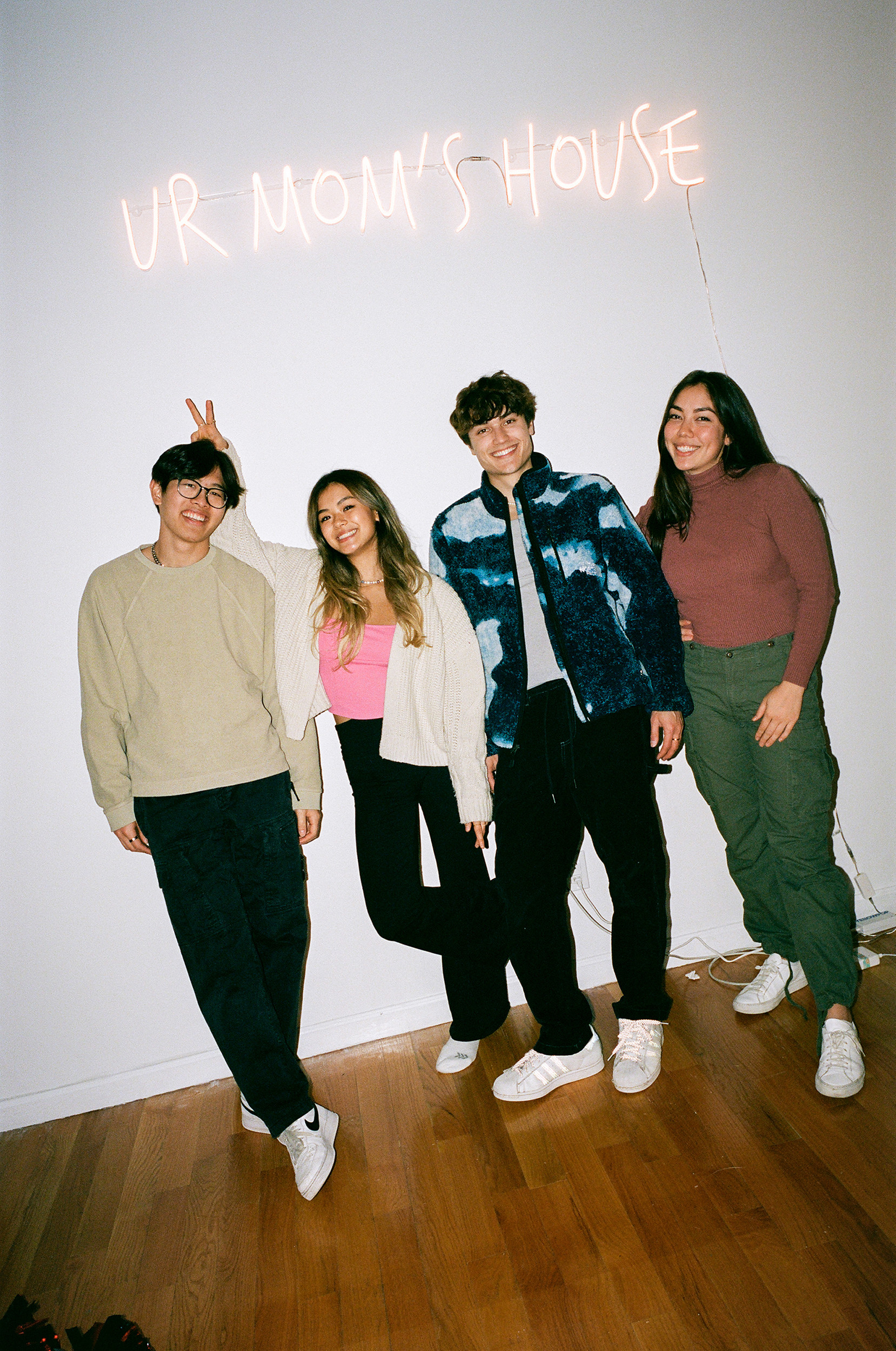
UPDATE
An image has been replaced in this post to better reflect the story.

